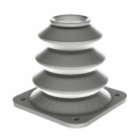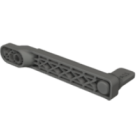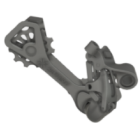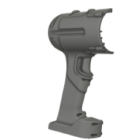Wall thickness 3D print
Wall thickness is one of the most critical — and most overlooked — design parameters in 3D printing. Whether you’re printing functional prototypes, end-use parts, or visual models, getting the wall thickness right can mean the difference between success and failure. Too thin, and your part may warp, crack, or collapse during printing or post-processing. Too thick, and you risk material waste, print errors, or internal stresses.
Understanding how wall thickness interacts with your chosen technology, material, and application is essential for building structurally sound, cost-effective prints.
What is wall thickness in 3D printing?
In simple terms, wall thickness refers to the distance between two surfaces of a 3D printed object — typically the outer shell and the inner cavity. It applies to vertical and horizontal walls, curves, and all geometry that carries structural load.
For example, in a hollow cylinder, the thickness of the tube wall defines its strength and durability. And while slicer software may allow for any theoretical value, your printer’s physics and material properties set real-world limitations.
Minimum wall thickness: don’t push the limits
Every technology and material has its own minimum printable wall thickness. Pushing these limits often leads to fragile prints or outright failures.
Typical minimums for reference:
- FDM (PLA/ABS): ~0.8–1.2 mm,
- SLA/DLP: ~0.5 mm,
- SLS (Nylon PA12): ~0.7 mm for vertical walls, 1 mm for unsupported,
- DMLS (metal): ~1–2 mm, depending on geometry.
However, these are absolute minimums for well-supported and simple geometry. For real-world, load-bearing or post-processed parts, going slightly thicker is always safer.
Thin walls vs infill: know the difference
Wall thickness is not the same as infill. Walls define the shell or outer structure — printed as solid contours — while infill is the internal pattern inside the object. Thin walls usually don’t have enough space for infill, meaning they rely entirely on the outer perimeter for strength.
If a wall is too thin to be printed as designed, slicers may skip it or merge it with adjacent geometry — creating unexpected gaps or weak points. Always check sliced previews carefully.
Best practices for wall thickness design
To ensure reliable prints, follow these design principles.
- Stick to 2–3 times the nozzle diameter (FDM) or laser spot size (SLS/DMLS) as a baseline.
- Increase wall thickness for functional parts or objects that require post-processing (like sanding or polishing).
- Avoid long, thin, unsupported vertical or horizontal walls — they tend to warp or break easily.
- Consider feature resolution and heat accumulation, especially for fine details.
For technologies like SLS, which allow for free-form, support-free printing, thin walls can be more easily achieved, but you still need to respect powder fusion behavior and minimum thickness requirements.
When to go thicker
There are specific use cases where thicker walls are not just safe, but necessary:
- mechanical or load-bearing parts,
- post-processed surfaces (e.g., vapor-smoothed, blasted, polished),
- threaded or tapped holes,
- parts exposed to environmental stress (e.g., heat, pressure, bending).
And remember: if dimensional accuracy matters, especially across flat surfaces or mating parts, thicker walls help reduce distortion and improve stability.
Summary
Wall thickness is more than just a design number — it’s a key factor in the structural integrity and printability of your part. Whether you’re designing for aesthetics, function, or production, aligning your wall thickness with the limits of your chosen 3D printing technology and material is essential. Invest time up front in proper wall design, and you’ll save yourself failed prints, wasted material, and poor performance down the line.
Explore also
- How to design for 3D printing?
- How big can 3D printers print?
- 3D printing overhangs
- What is resolution in 3D printing?
- Tolerances for 3D printing
- Support 3D print
Related categories













